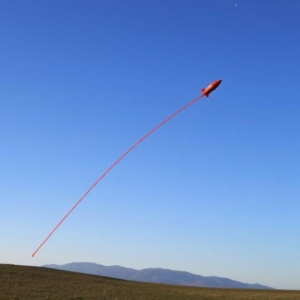1. Projectile Motion:
Projectile motion is the motion of an object that is thrown or propelled into the air, influenced by gravity. This type of motion follows a curved path called a trajectory. The object moves under the influence of two forces:
- Gravity pulls it down, making it fall.
- Initial velocity (speed and direction) gets it moving in the first place.
Key points about projectile motion:
- Horizontal motion: Once the object is thrown, its horizontal speed stays constant (no force acting in the horizontal direction unless air resistance is considered, but let’s ignore that for simplicity).
- Vertical motion: Gravity pulls the object down, so it accelerates downward at a rate of about 9.8 m/s² (on Earth).
Since gravity pulls downward, the object will follow a curved path. The path looks like a parabola (a U-shaped curve).

Example:
Imagine you throw a ball. While it moves forward (horizontally), gravity is pulling it downward, so it eventually falls to the ground. But it doesn’t fall straight down – instead, it follows a curved path (the trajectory).
The total motion can be broken down into:
- Horizontal velocity (which remains constant).
- Vertical velocity (which changes because of gravity).
2. Relative Motion:
Relative motion is the motion of an object as observed from a particular frame of reference. A frame of reference is simply a perspective or viewpoint from which you observe the motion of an object.
In simple terms: when we say something is moving, it’s always in relation to something else. Motion is relative to the observer’s position or viewpoint.
Key points about relative motion:
- If you’re sitting on a train that is moving forward, and you see someone walking in the opposite direction (inside the train), their speed will look different to you compared to someone standing outside the train.
- If you’re in a car, the speed of a bicycle passing you looks different depending on whether your car is moving or stationary.
Example:
- Two cars: Imagine you’re in a car going 50 km/h, and another car is going 30 km/h in the same direction. To you, the second car is moving at 20 km/h because you’re both moving in the same direction, and you subtract the two speeds. But to someone standing still outside, both cars are moving at their own speeds (50 km/h and 30 km/h).
- Train and person inside: If you’re standing on a train moving at 60 km/h, and someone is walking inside the train at 5 km/h in the same direction, their speed relative to you would be 5 km/h. However, to someone standing outside the train, the person walking would appear to be moving at 65 km/h.
So, relative motion depends on the observer’s point of view.
In short:
- Projectile Motion: A type of motion where an object moves in a curved path under the influence of gravity, like throwing a ball.
- Relative Motion: The movement of objects is observed differently depending on the observer’s frame of reference. It’s all about how motion looks from different points of view.











